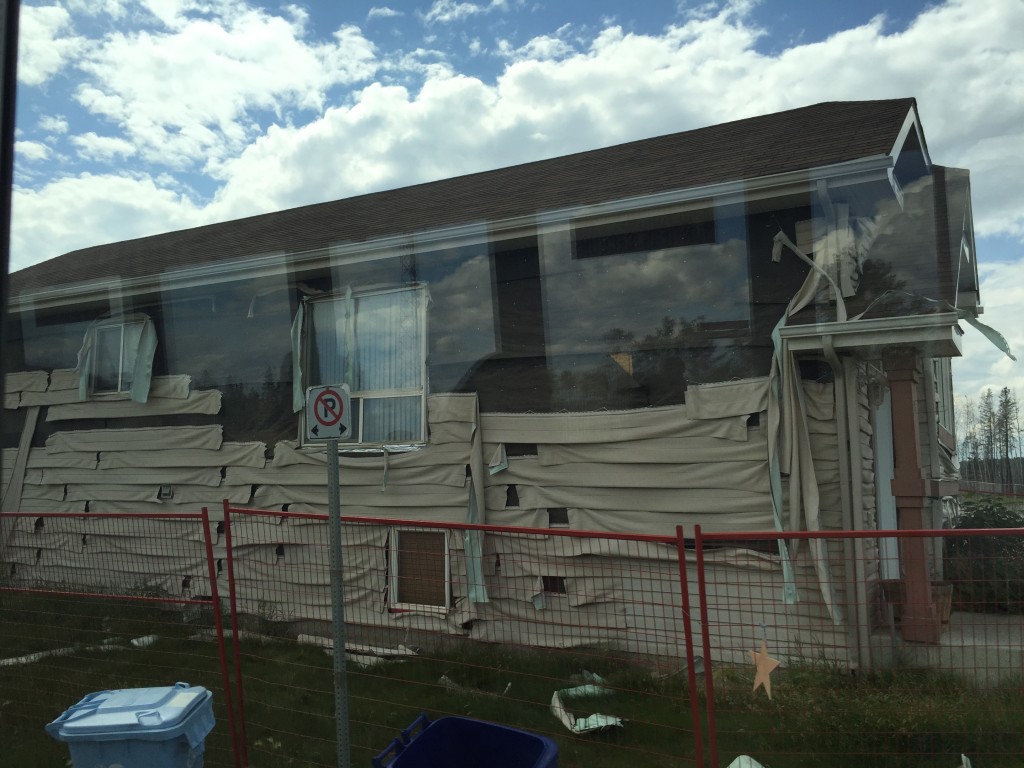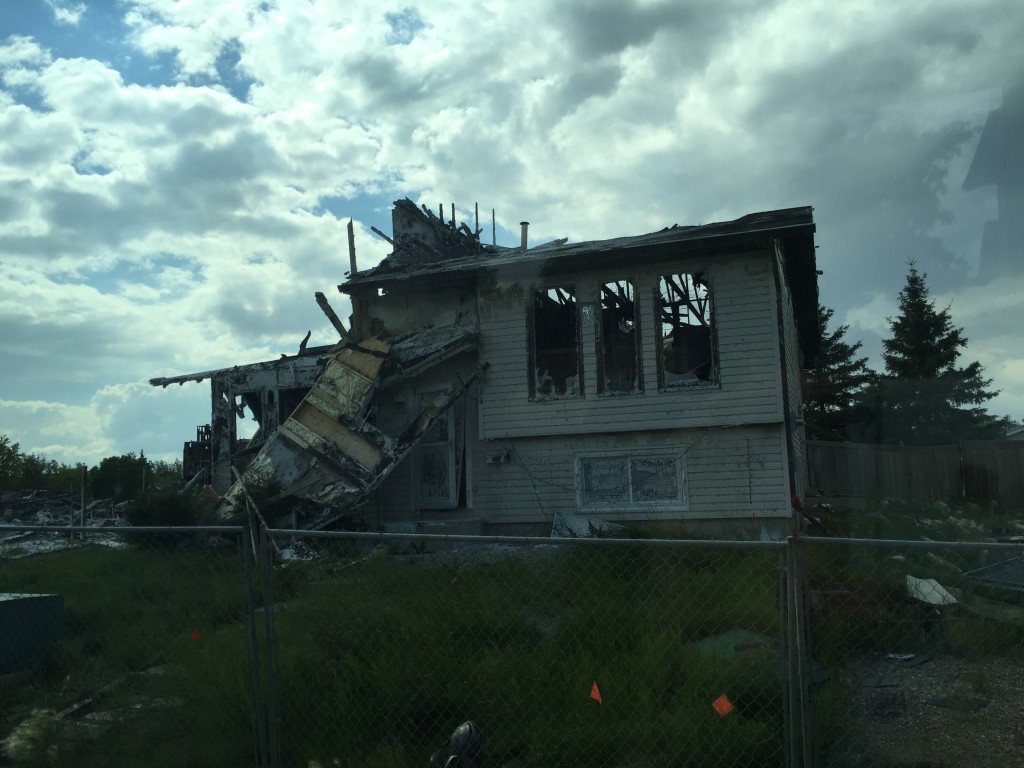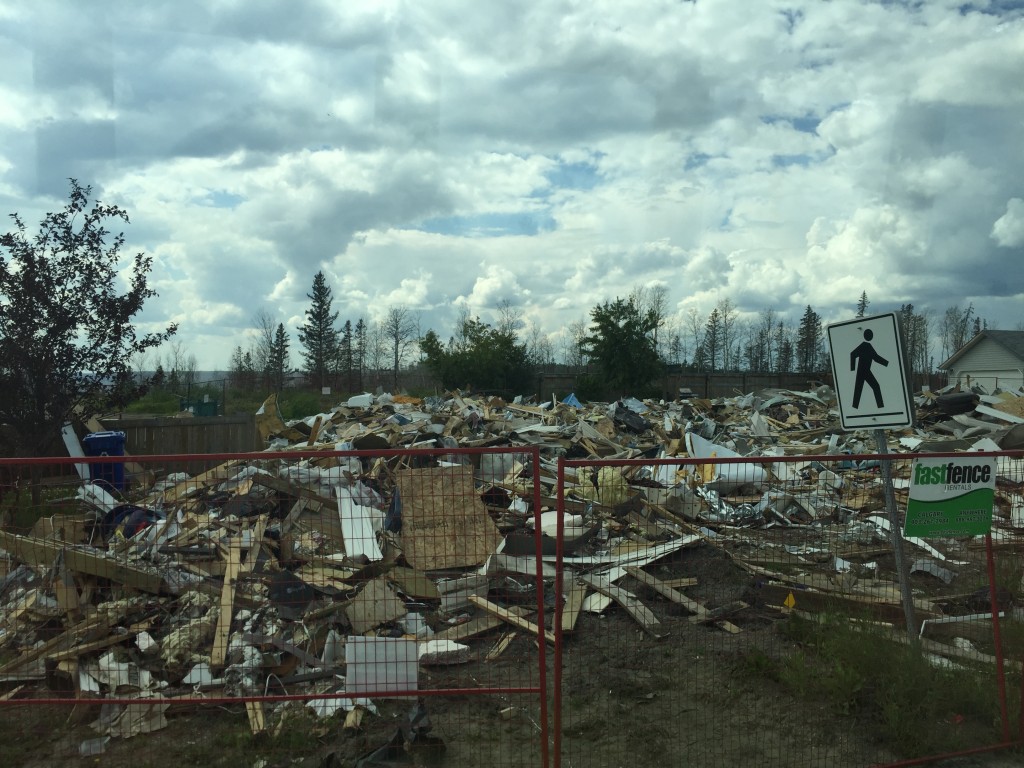After the smoke clears
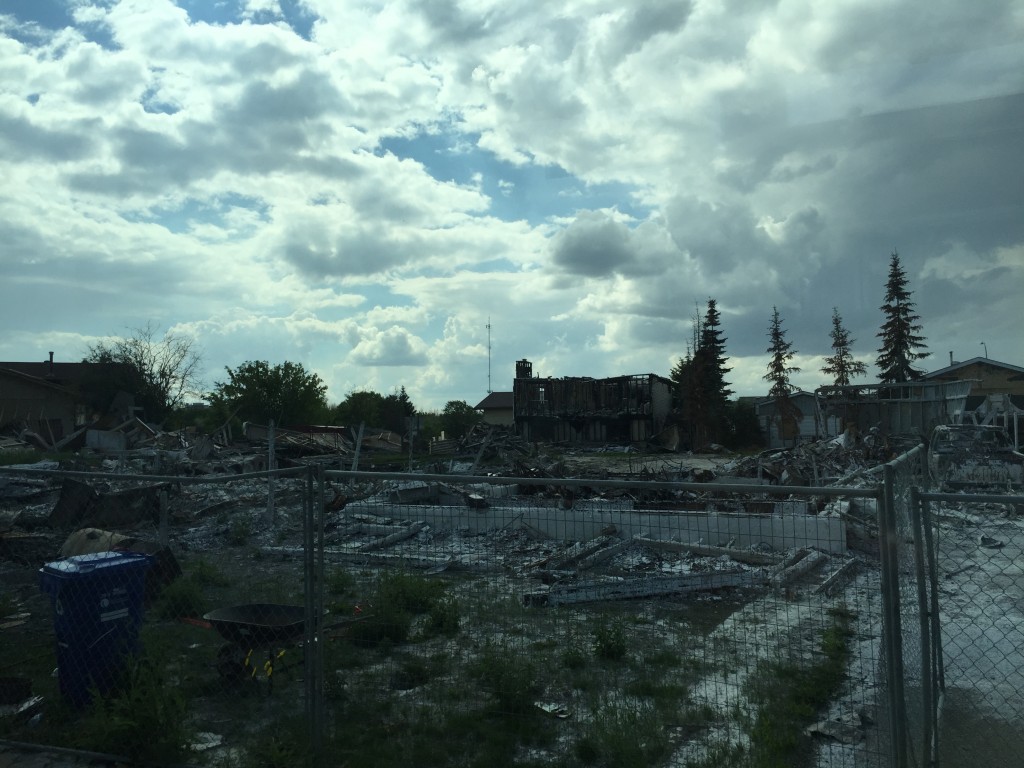
A trash bin and wheelbarrow are reminders that this was recently someone’s yard. Note the burned pickup truck on the far right. Photo: Peter Schalk
It’s faded from daily headlines, but the disaster is far from over in Fort McMurray, Alberta. A giant wildfire devastated part of the city and surrounding area in May and June. About 2,400 buildings in the city of over 61,000 were destroyed, along with hundreds more in nearby oil sands mining camps. Thousands of other buildings were damaged.
So far, the estimated amount of insurance claims is CDN $9 billion, making it the most expensive disaster in Canadian history. 1.5 million acres burned and 90,000 people were evacuated from their homes. Amazingly, nobody was hurt or killed during the evacuation and there was only one indirect death from the fire itself.
Peter Schalk, a friend of mine who lives in Alberta, recently toured some of the hardest-hit neighborhoods in Fort McMurray by bus and got a look at both the damage and the slow process of cleaning up . He took a few photos through the bus window and sent them to me. Peter kindly agreed to let me use them for this post.
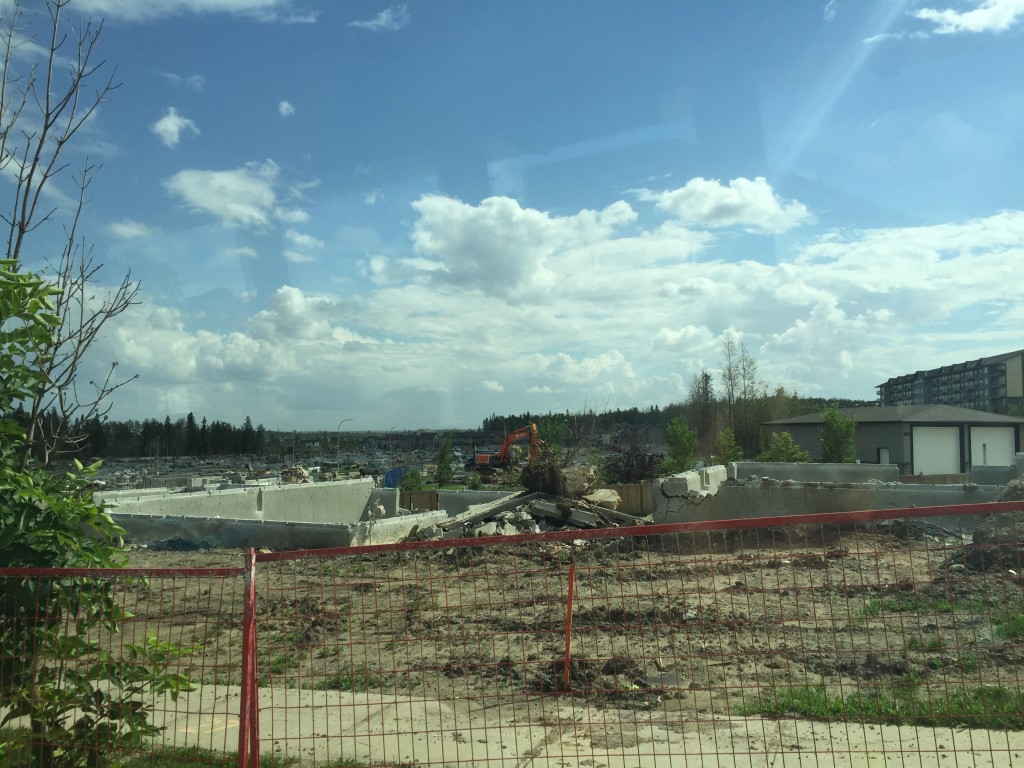
The blue sky and the return of green trees and grass make it seem unbelievable that Fort McMurray was filled with fire and smoke just two months ago. A backhoe excavator works in the distance, sifting through the ruins. Photo: Peter Schalk
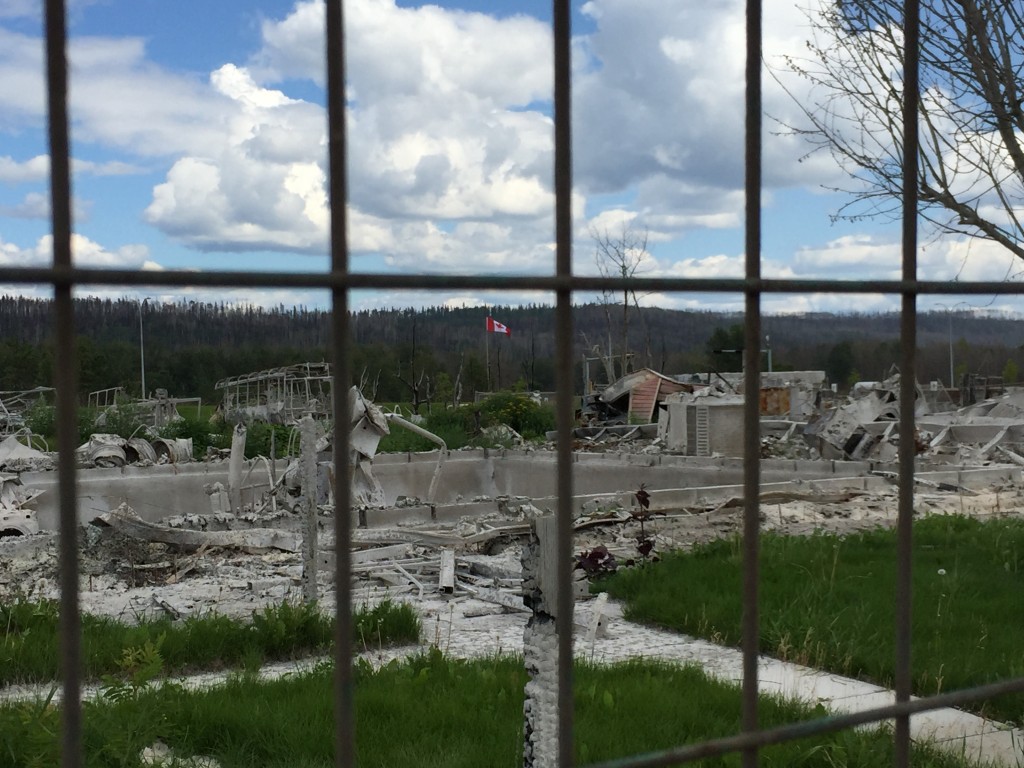
A lone Canadian flag stands like a scarlet symbol of resilience behind charred gray ruins. This site has been spread with a tackifier substance made out of wood pulp and recycled paper. It’s meant to keep the dust down and to prevent toxic substances in the rubble from becoming airborne. Photo: Peter Schalk





